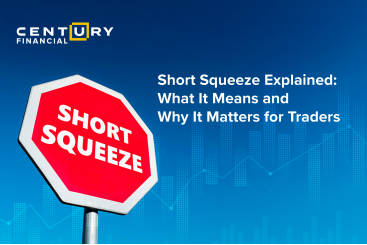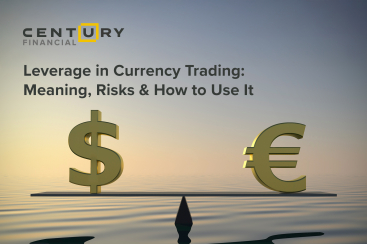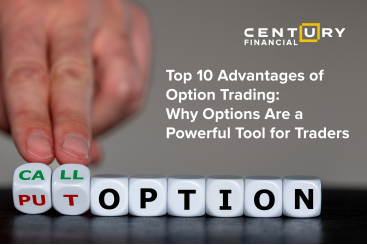Tuesday, October 04, 2022
The psychological shift in Investment Management
By Century Financial in 'Blog'

.jpg)
At the beginning of their careers, most financial advisors are cautioned to proclaim, “This time, it is different.” Because on most occasions, it is not. The challenges may change, and the magnitude of the impact may vary, but the results are nearly always the same. Inflation, asset bubbles, prolonged bull markets, political risk — all represent the daily changes investors and financial advisors have to navigate.
Investors feel euphoric when their investment portfolio performs well and nearly close to invincible when their portfolio performs higher than expected. However, to appreciate these highs, we need to understand that market lows are a part of the investment cycle. It is essential to look at the many tectonic shifts happening in the market, but also remember what the big picture is. Plus, in today’s market, it is also worth exploring other investment avenues.

The multiple reasons the markets move
Psychological factors play a huge part in influencing outcomes on a personal and collective scale in the financial markets. And it makes sense with the onslaught of 24-hour news on tv and the rapid speed at which information is delivered to consumers, serving to inflated reactions resulting in the stock market swing. Aside from creating an unsettling and uncertain atmosphere, it makes investors more emotional. It ensures they miss out on critical events that can actually have an impact on their investment, especially in the long term. For instance, interest rates drive the stock and bond markets and when rates are hiked, they impact both the markets. Sadly, most investors are likely to only realize its impact on their investments later.
How to not use your emotions when investing





Emotions in play
Generally, investors allow two emotions to rule their investment decisions – Fear of Missing Out (FOMO) and Fear of Losing Everything (FOLE).

When it comes to FOMO, investors look to chase a stock, trend or financial instrument that is perceived to do well and when done without any research or strategy in place leads to speculation. Such speculative thinking that is yet to be established can have a determinantal effect on your investments. Take the recent NFT (non-fungible tokens) craze, where many investors invested in NFTs and obscure NFTs, thinking it’s the next best investment.
But even as investors don’t want to be left out, another emotion drives them – FOLE – losing all your investments. When the market fluctuates, investors get unnerved and sideline their investments to steer clear of big sell-off or stock market crashes.
However, even as these behaviors have impacted investor sentiments, there has been a shift in how investors see their investments and where they should be invested.
A shift in investor focus
Collectively, there seems to be a shift in how investors see their money being invested. They have become more socially, environmentally, technologically and financially aware. A tipping point for this change in investor behavior many consider has been the COVID-19 pandemic. It made investors realize the fragility of the global marketplace and how connected we are to each other. These are the three areas where investors may seek to place their money:



The new generation of emerging investors is millennials and Gen Zs, who are more reliant on data and technology compared to the generations before. From taking advantage of algorithmic trading to venturing into new investment avenues like the cryptocurrency exchange, the current generation is making headways in trading.
And unlike the generation earlier, they seem to have more progressive views, and their influence will matter during the most significant redistribution of wealth in human history. In the next two decades in the US alone, an estimated $68 trillion is projected to change hands which is likely to reshape financial services.
What is socially responsible investing?
It is the practice of investing money in companies and funds that have positive social impacts.
Ways to make rational investing decisions
However, even with this shift in behaviors from the younger generation, it is essential to have the basics in place.
Diversify: Most financial advisors will likely advise their clients to diversify their portfolios. Keep your money in mutual funds, but also invest in treasury bonds. The goal is to drive the best risk-adjusted portfolio returns with a balance between sectors.
Stagger buy and sell decisions: To limit yourself from emotional investing, stagger your buy and sell trades. One way of doing this is that if you want to buy 1000 shares of a particular stock, it would be wise to purchase 400 shares at the current price level and in the following order at 5% or 10% and the remaining at 20% at the current level.
A solid investment approach: Come up with an investment approach that helps you combat your emotions. A straightforward way of going about it is by having dividend-paying stocks in your portfolio.
The content in this blog, including any research, analysis, opinions, forecasts, or other information (collectively, "Information"), is provided by Century Financial Consultancy LLC (CFC) for marketing, educational, and general informational purposes only. It should not be construed as investment advice, a recommendation, or a solicitation to buy or sell any financial instruments.
This Information may also be published across various channels, including CFC’s website, third-party platforms, newsletters, marketing materials, emails, social media, messaging apps, webinars, and other communications. While CFC strives for accuracy, we do not guarantee the completeness, reliability, or timeliness of any content. Any decisions made based on this Information are at your own risk. CFC accepts no liability for any loss or damage arising from its use.
Trading financial products involves significant risk and may not be suitable for all investors. Please ensure you fully understand the risks and seek independent professional advice if necessary.
Please refer to the full risk disclosure mentioned on our website.









.png)
.png)
.png)
.png)


